Recent Articles
Popular Makes
Body Types
2017 Hyundai Ioniq Road Test and Review
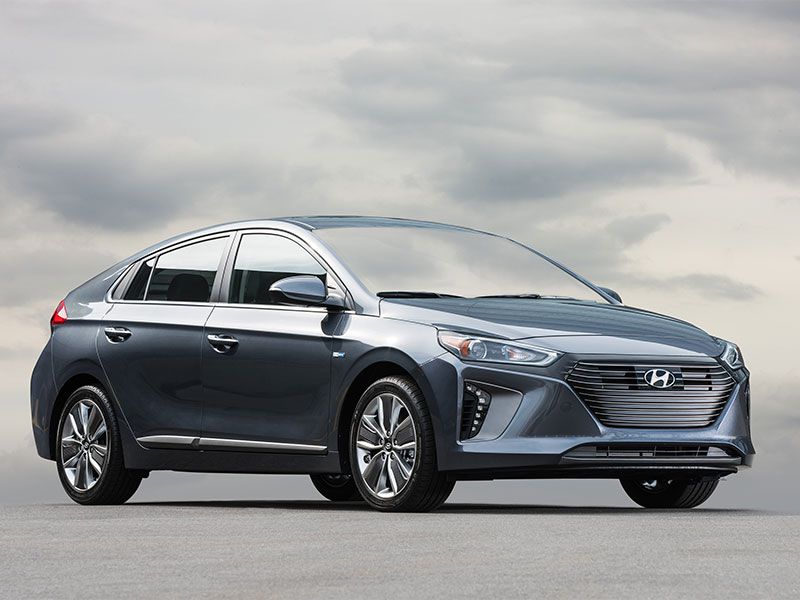
2017 Hyundai IONIQ Hybrid exterior front angle ・ Photo by Hyundai
Meet the Ioniq, the new affordably-priced hybrid hatchback from Hyundai. Traditionally, cars in this segment have had a hard time competing against the king of the hill, the Toyota Prius—but we think the Ioniq’s prospects are good. Let’s drive it and see why.
The competition is tough.
Ever notice how few manufacturers build dedicated hybrid cars? Lots of them make hybrid versions of other models in their lineup, but there are few dedicated hybrids—mainly because it’s just so darn difficult to complete with Toyota, which makes the Prius, Prius c, and Prius v. Even Honda, Toyota’s greatest rival, hasn’t done well; their dedicated hybrid, the Insight, never took off the way the Prius did. (Honda discontinued it after 2014.) But South Korean automaker Hyundai is never one to back down from a challenge, and now they are introducing their own dedicated hybrid, the Ioniq—except this will be more than a dedicated hybrid, as Hyundai also plans plug-in hybrid and full-on electric versions. In many ways, the Ioniq’s mission is similar to that of Honda’s Insight: A low-cost alternative to the Prius. The difference? Hyundai has done a better job.
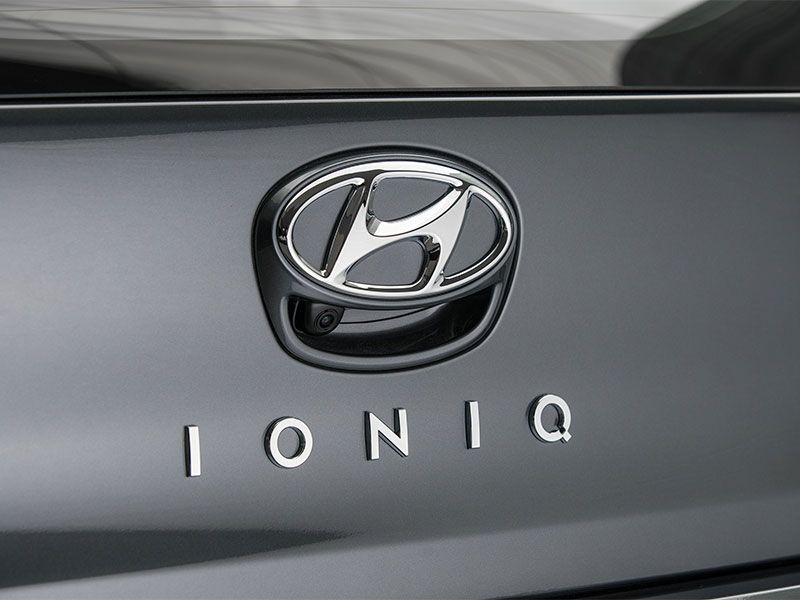
Photo by Hyundai
A new variation on a familiar theme.
If you don’t remember Honda’s 4-door Insight, a look at the new Ioniq might remind you. The Ioniq is similar in size and shape, though the profile also bears a resemblance to Chevrolet’s Volt. Those who are put off by the wacky styling of the new Prius will love the way the Ioniq looks: The smooth front end with its trapezoidal grille has an unmistakable Hyundai vibe, and the back end has expensive-looking detailing—all the more notable because this is not a very expensive car, at least not at the low end. The entry-level Ioniq, called the Ioniq Blue, sells for $23,305 (including destination charge). To put that in perspective, the least-expensive Prius you can buy lists for $27,650.
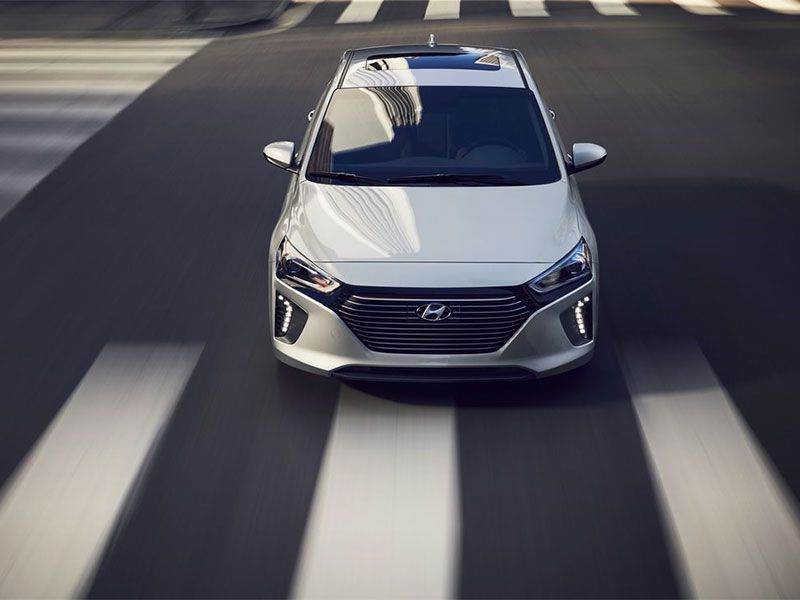
Photo by Hyundai
A more conventional drive.
One big difference between the Hyundai Ioniq and other hybrids is the way it drives. Most hybrid cars use some variation of a continuously variable automatic transmission (CVT), which allows the engine speed to rise and fall regardless of how fast the car is moving (this as opposed to conventional geared transmissions, in which there is always a set relationship between engine speed and road speed). Hyundai has used a dual-clutch transmission (DCT), a type of automatic favored for both economy and sporting applications because it connects the engine directly to the gearbox, just like a stick shift. One problem with DCTs is that they often lack low-end power because they don’t let the engine rev very high at low speeds. Since the Ioniq’s DCT is driven by both the gas engine and an electric motor, and since electric motors deliver maximum pulling power at low speeds, the Ioniq neatly side-steps this problem, accelerating briskly from a stop.
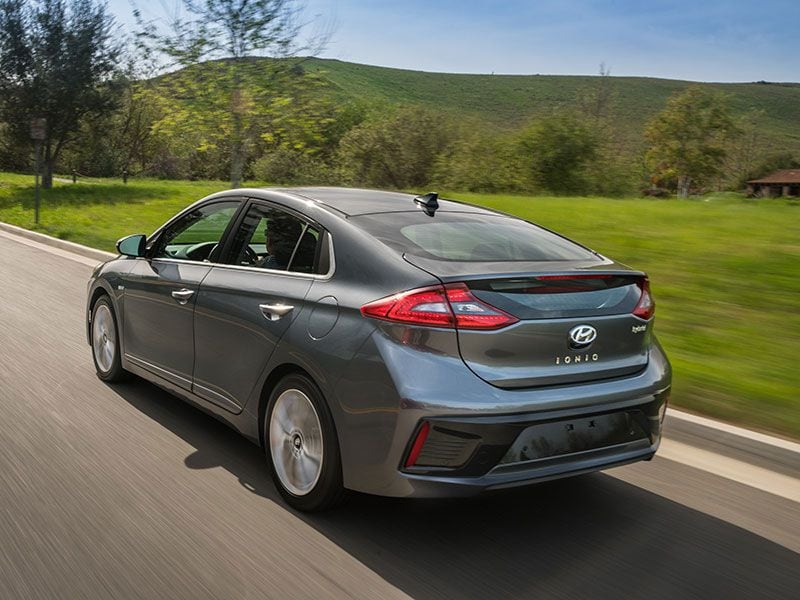
Photo by Hyundai
Something different under the hood
The Ioniq’s powertrain is built around a 1.6-liter gasoline engine (for those who are interested in these sorts of things, the engine is a member of Hyundai’s long-stroke Kappa family, set up to run on an Atkinson cycle) and a 32-kilowatt electric motor. Total system output is 139 horsepower, which may not sound like much, but don’t discount the pulling power of that electric motor. The Ioniq is no Corvette, but it has plenty of power to pull away from stoplights and merge onto the freeway with authority. The engine goes about its business with a minimum of fuss and racket, and the DCT shifts gears like a conventional automatic—a change that will be welcome for those who don’t like the Prius’ transmission, which tries to run the engine at a near-constant RPM for maximum efficiency. We like the way the Ioniq’s powertrain delivers power, and we were also satisfied with the ride, though we did notice a bit more road noise in the top-of-the-line Limited model (which is odd, as it uses conventional tires; we expected the high-mileage Michelin Energy Savers on the base model to be louder). Handling is competent, though we found the steering to be a bit too darty on the highway, a complaint we’ve registered about other Hyundai models.

Photo by Hyundai
How efficient is it?
Just how efficient is the new Ioniq? The EPA rates the SEL and Limited models at 55 mpg city and 54 mpg highway, while the base model Blue does better at 57 mpg city/59 mpg highway. We’ve found that when it comes to hybrids, real-world fuel economy can vary greatly from EPA numbers. (One reason the Prius is so popular is that it actually delivers the fuel economy it promises.) Due to rainstorms and road closures in California during the press preview, our route wasn’t a good approximation of real-world conditions, but we were very happy with the 43.9 mpg we saw out of a Limited model. We’ve also seen very favorable results from the Kia Niro, which uses the same hybrid powertrain. (Kia and Hyundai are corporate siblings.) We’ll need more seat time to determine if the Ioniq will deliver the fuel economy it promises, but we’re cautiously optimistic.
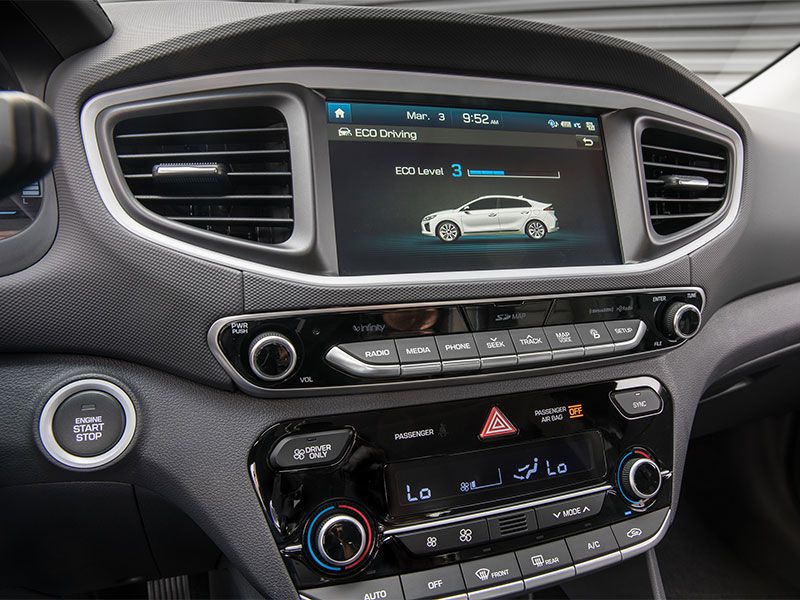
Photo by Hyundai
The engine isn’t all that’s green
There is more to a “green” car than fuel efficiency; we also like to see green construction methods, and here too the Ioniq delivers. The door panels are made from a material made from recycled plastic, powdered wood, and volcanic stone; it’s high-quality stuff, and it also happens to weigh 20% less than regular plastic, which helps with the Ioniq’s fuel economy (a lighter car needs less fuel to push it around). This is a nice material and we’d like to see it used in more areas of the Ioniq’s interior. Raw ingredients for the headliner, carpets and soft-touch door panels include a large percentage of sugar cane. Hyundai also created a more eco-friendly paint for some of the interior trim pieces. Not only is the Ioniq’s interior eco-friendly, it’s user-friendly as well. The layout is fairly conventional, and all of the controls are easy to find and easy to use. To maximize space efficiency, Hyundai has packaged the hybrid battery and fuel tank together under the rear seat, which frees up interior space; even so, we wouldn’t mind a little more room in the back seat and the cargo area.
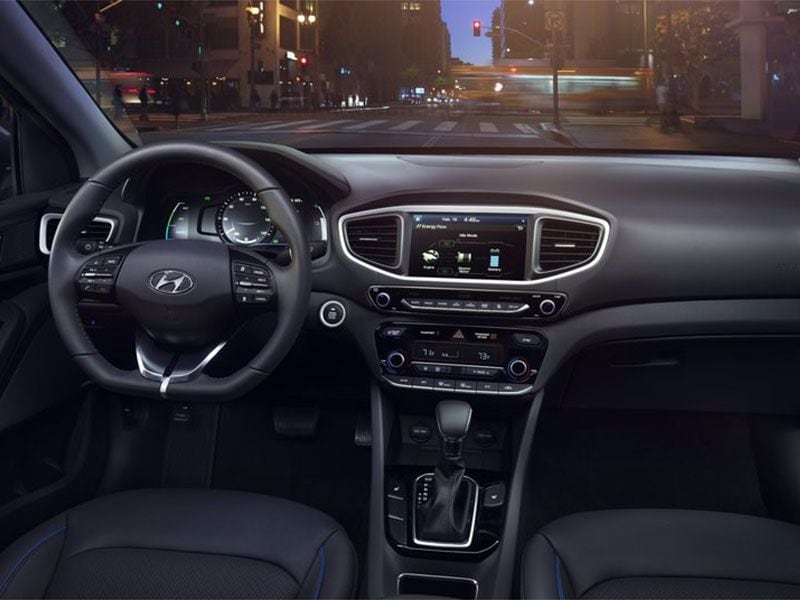
Photo by Hyundai
A well-heeled hybrid
During our test drive, we sampled two Ioniqs, a base-model Ioniq Blue and a top-of-the-line Ioniq Limited with the Ultimate Package. We were impressed by the Limited, which has leather seats, a sunroof, and Hyundai’s comprehensive BlueLink telematics system with a three-year subscription; the Ultimate package adds navigation, a wireless charging pad, and rear-seat air vents (we’re surprised the latter isn’t offered in all Ioniqs, but from a fuel economy point of view, we can see the wisdom in not cooling the entire car when only the front seats are occupied).
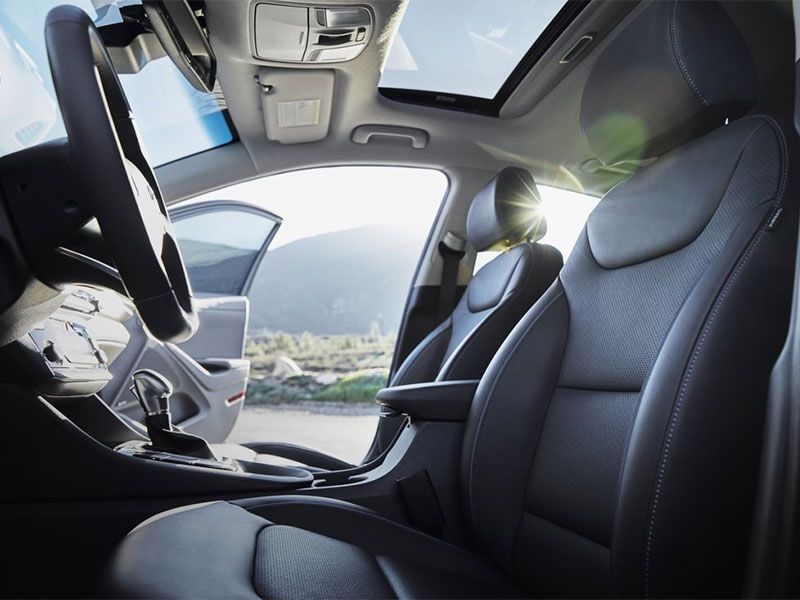
Photo by Hyundai
…but the base model is nice, too
That said, we were equally impressed by the Ioniq Blue. The list of standard equipment is long, and it includes dual-zone climate control and a touch-screen stereo that is compatible with Apple CarPlay, Android Auto, and Bluetooth, as well as power windows, locks and mirrors and cruise control. The seats are covered in high-quality cloth with a cool cell-themed pattern. It’s a great value for $23k. We’d say the same about the $24,785 Ioniq SEL, which adds an attractive digital dashboard, blind spot and rear cross traffic alert, and heated front seats with power adjustment for the driver. Automatic emergency braking, adaptive cruise control, and lane departure warning are available as part of a thousand-dollar option bundle on the SEL. But the Limited seems rather pricey to us at $28,335, and when you add in the Ultimate Package, the price tag rises to $31,335. We think this is rather expensive for what should be an entry-level hybrid (especially when you can get a perfectly good one for 23 grand). When we voiced this concern to Hyundai, they pointed out that a loaded Prius Four Touring costs about $1,300 more (and doesn’t have real leather). That’s true, but it’s a far cry from the $4,350 gap between an Ioniq Blue and a base-model Prius.
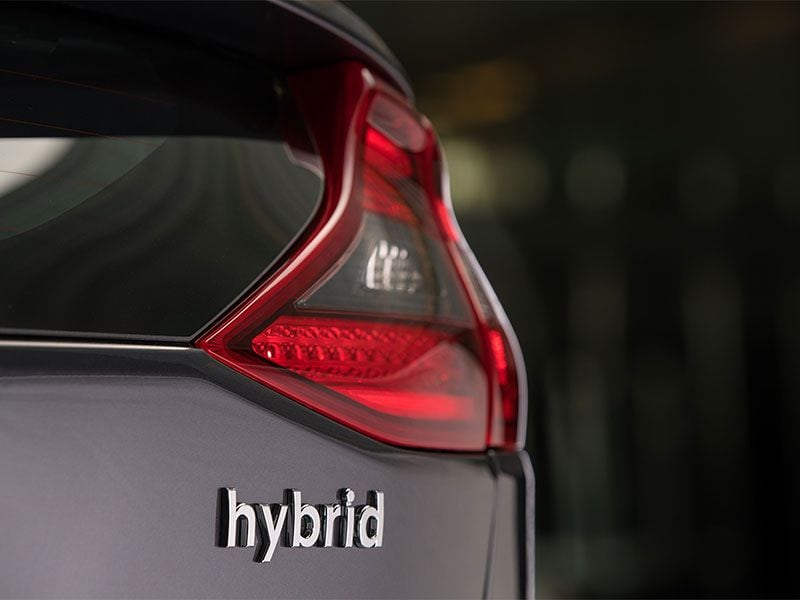
Photo by Hyundai
Long Warranty
Long warranties are a Hyundai tradition, and the Ioniq is no exception: The car comes with a 5-year/60,000 mile bumper-to-bumper warranty (most cars, including the Prius, only get 3 years or 36,000 miles of coverage), with a 10-year/100,000 mile warranty on the powertrain (though that only covers the first owner). Hyundai is touting a lifetime warranty on the hybrid battery, though we’re not sure if this is really substantive or just marketing hype. The warranty only covers outright failure; it does not cover reduced capacity as the battery ages, which is a problem with lithium-ion batteries (though not as pronounced as the nickel-metal-hydride (NiMH) batteries used in some other hybrids). Like the powertrain warranty, it only applies to the original owner (subsequent owners get 10-year/100,000 mile coverage), though Hyundai is considering adding it to cars in their Certified Pre-Owned program. For the record, no other hybrid that we know of offers a battery warranty beyond the regular powertrain warranty.
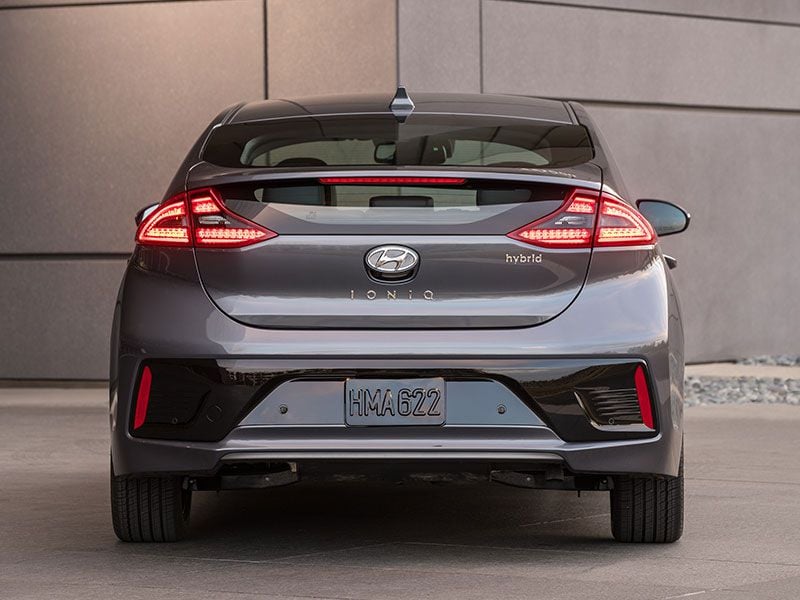
Photo by Hyundai
But wait! There’s more!
Incidentally, the model we drove is not the only Ioniq that will grace dealer showrooms. In a few months, Hyundai will start selling an all-electric Ioniq in California (and, eventually, other states). It will have 124 miles of range and a bargain price of $30,335, or $22,835 after the $7500 federal tax credit (assuming the new administration doesn’t kill that off). Towards the end of this year, we’ll see a plug-in version that will offer approximately 27 miles of electric-only driving, with regular gasoline-fueled hybrid operation when the battery runs low. We sampled a production version of the Ioniq Electric and a prototype of the plug-in hybrid, and as with the regular Ioniq, we were impressed.
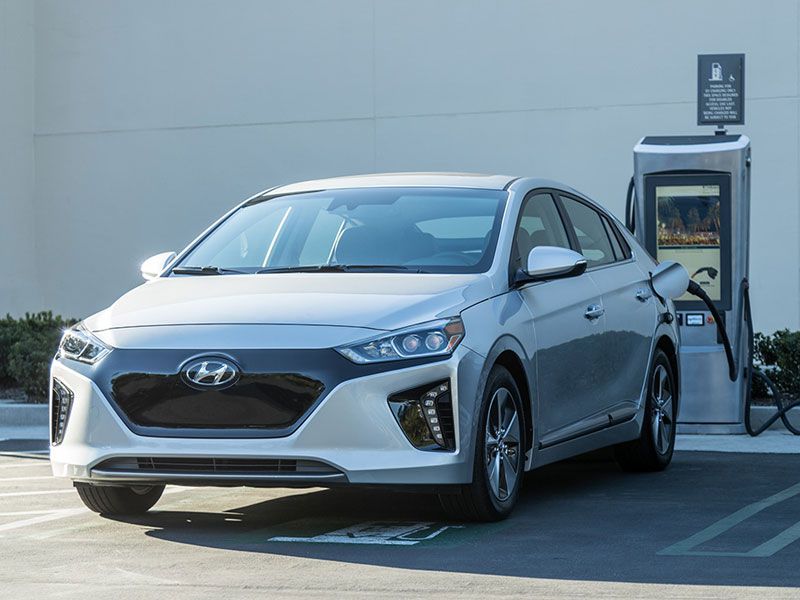
Photo by Hyundai